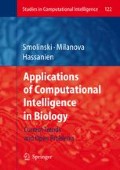Summary
Conceptual biology utilizes a vast amount of published biomedical data to enhance and speed up biomedical research. Current computational study on conceptual biology focuses on hypothesis generation from biomedical literature. Most of the algorithms for hypothesis generation are dedicated to produce one type of hypothesis called pairwise relation by interacting with certain search engines such as PubMed. In order to fully realize the potential of conceptual biology, we designed and implemented a conceptual biology research support platform that consists of a set of interrelated information extraction, mining, reasoning, and visualizing technologies to automatically generate several types of biomedical hypotheses and to facilitate researchers in validating generated hypotheses. In this chapter, we provide detailed descriptions of the platform architecture, the algorithms for generating novel hypotheses, and the technologies for visualizing generated hypotheses. Furthermore, we propose a set of computational procedures and measures for evaluating generated hypotheses. The experimental analysis of the proposed hypothesis generation algorithms is also presented.
Access this chapter
Tax calculation will be finalised at checkout
Purchases are for personal use only
Preview
Unable to display preview. Download preview PDF.
References
Cohen AM, Hersh WR (2005) A survey of current work in biomedical text mining. Brie_ngs in Bioinformatics. 6:57–71.
Don RS (1986) Raynaud's syndrome, and undiscovered public knowledge. Perspective in Biology and Medicine 30(1):7–18.
Don RS (1990) Medical literature as a potential source of new knowledge. Bulletin of the Medical Library Association 78(1):29–37
Don RS (1990) Somatomedin C and arginine: implicit connection between mutually-isolated literatures. Perspective in Biology and Medicine 33(2):157–186.
Gambineri A, Patton L, Vaccina A, Cacciari M, Morselli-Labate AM, Cavazza C, Pagotto U, Pasquali R (2006) Treatment with utamide, metformin, and their combination added to a hypocaloric diet in overweight-obese women with polycystic ovary syndrome: a randomized, 12-month, placebo-controlled study. Journal of Clinical Endocrinology & Metabolism 91(10):3970–3980.
Drugbank. http://redpoll.pharmacy.ualberta.ca/drugbankas of October, 2007.
ExPAsy Proteomics Server (ExPAsy). http://ca.ExPAsy.org/as of October, 2007.
Hongkun Z, Weiyi M, Zonghuan W, Vijay VR, Clement TY (2005) Fully automatic wrapper generation for search engines. Proceedings of the 14th International World Wide Web Conference (Chiba, Japan) 66–75.
Hu X, Zhang X, Li G, Yoo I, Zhou X, Wu D (to be published) Mining Hidden Connections among Biomedical Concepts from Disjoint Biomedical Literature Sets through Semantic-based Association Rule. International Journal of Intelligent Systems.
Johannes S, Guenter G (2003) Hypothesis generation guided by co-word clustering. Scientometrics 56(1):111–135.
Michael DG, Robert KL (1996) Toward Discovery Support Systems: A Replication, Re-Examination, and Extension of Swanson's Work on Literature-Based Discovery. Journal of the American Society for Information Science 47(2):116–128.
Mikhail VB, Arthur BP (2002) Unearthing the gems. Nature 416:373.
Ohtomo S, Izuhara Y, Takizawa S, Yamada N, Kakuta T, van Ypersele de Strihou C, Miyata T (2007) Thiazolidinediones provide better renoprotection than insulin in an obese, hypertensive type II diabetic rat model. Kidney international.
Padmini S (2004) Text mining: generating hypotheses from MedLine. Journal of American Society for Information Science and Technology 55(5):396–413.
The RCSB Protein Data Bank (PDB). http://www.rcsb.org/pdb/home/home.doas of October, 2007
PubMed. http://www.ncbi.nlm.nih.gov/sites/entrez?db=PubMedas of October, 2007.
Selego. http://www.selego.comas of Octorber, 2007.
Tanja B(2006) Conceptual biology, hypothesis discovery, and text mining: Swanson's legacy. Biomedical Digital Library 3(2).
Uni_ed Medical Language System (UMLS): http://umlsinfo.nlm.nih.gov/as of October, 2007.
Wanda P, Meliha Y(2003) LitLinker: capturing connections across the biomedical literature. Proceedings of the 2nd international conference on Knowledge capture (New York, USA) 105–112.
Weeber M, Klein H, Aronson AR, Mork JG, JongVan Den Berg L, Vos R(2000) Text-based discovery in biomedicine: the architecture of the DAD-system. Proceedings of the AMIA Annual FALL Symposium(Philadelphia, USA) 903–907.
Yiyu Y, A Framework for Web-based Research Support Systems. Proceedings of 27th Annual International Computer Software and Applications Conference (Dallas, USA) 601–606.
1999 The Diabetes Prevention Program. Design and methods for a clinical trial in the prevention of type 2 diabetes. Diabetes Care 22(4):623–634.
Author information
Authors and Affiliations
Editor information
Editors and Affiliations
Rights and permissions
Copyright information
© 2008 Springer-Verlag Berlin Heidelberg
About this chapter
Cite this chapter
Xie, Y., Katukuri, J., Raghavan, V.V., Presti, T. (2008). Conceptual Biology Research Supporting Platform: Current Design and Future Directions. In: Smolinski, T.G., Milanova, M.G., Hassanien, AE. (eds) Applications of Computational Intelligence in Biology. Studies in Computational Intelligence, vol 122. Springer, Berlin, Heidelberg. https://doi.org/10.1007/978-3-540-78534-7_13
Download citation
DOI: https://doi.org/10.1007/978-3-540-78534-7_13
Publisher Name: Springer, Berlin, Heidelberg
Print ISBN: 978-3-540-78533-0
Online ISBN: 978-3-540-78534-7
eBook Packages: EngineeringEngineering (R0)

